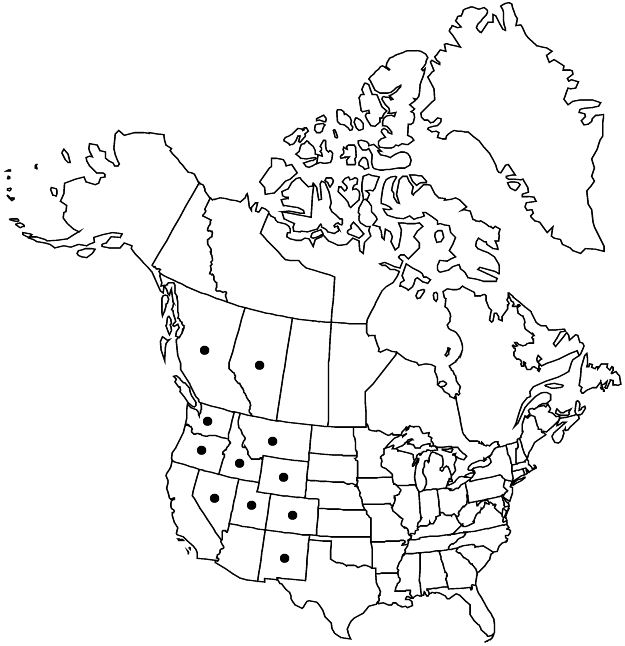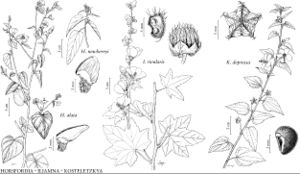Difference between revisions of "Iliamna rivularis"
Leafl. Bot. Observ. Crit. 1: 206. 1906.
FNA>Volume Importer |
FNA>Volume Importer |
(No difference)
| |
Revision as of 20:15, 24 September 2019
Stems 0.5–2 m; herbage sparsely stellate-hairy. Leaf blades deeply (3-), 5-, or 7-lobed, 5–20 cm wide, lobes triangular-ovate, broadest at base, base truncate to cordate, margins coarsely dentate. Inflorescences clusters forming interrupted spikes to corymbose racemes distally; involucellar bractlets linear-subulate, 3–6(–8) × 1 mm, 1/3–2/3 as long as calyx. Flowers: calyx 5–8(–11) mm, lobes triangular-ovate to obtuse, 2.5–4(–5.5) mm, ± as wide as long, slightly exceeding tube; petals pinkish white to rose-purple, 1.8–2.5 cm. Schizocarps 10–12 mm diam.; mericarps 8–12, 6–10 mm. Seeds (2 or)3 or 4, dark brown, 2 mm, puberulent. 2n = 66.
Phenology: Flowering Jun–Aug.
Habitat: Stream banks, meadows, open woodlands, disturbed places, foothills to mountain slopes
Elevation: 1400–2900 m
Distribution

Alta., B.C., Colo., Idaho, Mont., Nev., N.Mex., Oreg., Utah, Wash., Wyo.
Discussion
Iliamna rivularis is variable in stature, pubescence, and leaf characters. Plants of Idaho and Wyoming with distally smaller (4–10 cm), three- to five-lobed blades, truncate bases, and inconspicuously toothed margins have been recognized as var. or subsp. diversa, but fall within the morphological range of the species as a whole.
Iliamna rivularis is in the Center for Plant Conservation’s National Collection of Endangered Plants as I. rivularis var. rivularis.
Selected References
None.
